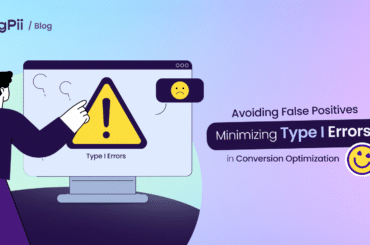Imagine you are a chef preparing a new dish for your restaurant. Before adding it to the menu, you want to ensure it satisfies your customers’ taste buds and preferences.
Here’s how you do it in terms of User Testing and A/B testing.
User testing: You’d invite a small group of potential customers to a private tasting session. You watch their reactions closely as they try the new dish. You observe their facial expressions, listen to their feedback, and note what they like and dislike.
This hands-on approach helps you understand how well the dish resonates with your target audience and what improvements are needed.
User testing is about ascertaining that users need and want to use your product, and this should not be confused with usability testing(a process in user testing), which is a test to see whether users can successfully use your products to complete specific tasks.
Now, for A/B testing…
It is like offering two variations of the same dish to different groups of customers during a busy dinner service.
For example, you might create two versions of your new dessert—one with chocolate sauce and the other with caramel sauce. You serve these variations to two groups of customers without them knowing they are trying different versions.
Group A receives the original version of the dish, while Group B gets a modified version with some tweaks, like different spices or toppings.
A/B testing allows you to identify the most preferred elements and optimize your dish based on real customer preferences.
User Testing; What is it about?
User testing is a crucial step in product development that allows you to gain valuable insights from potential users and ensure that your product meets their needs.
User testing typically follows a structured process, which includes defining clear research objectives, identifying the target audience, creating test scenarios and tasks, recruiting participants, conducting the tests, and analyzing the findings.
Importance of User Testing
User testing plays a pivotal role in the product development process, offering many benefits that significantly impact the success of your product.
Let’s delve into the various reasons why user testing is of paramount importance.
-
Market Validation
User testing serves as a valuable tool for market validation. When you gather feedback directly from potential users, you can ascertain whether there is a genuine demand for your product.
This validation helps you avoid investing time and resources into building a product that might not resonate with your potential target audience.
-
Optimizing User Experience
User testing is instrumental in fine-tuning the user experience. You can optimize the interface, layout, and functionality by watching users navigate your product and listening to their feedback to ensure a seamless and enjoyable user journey.
-
Validation of Product Assumptions
Every product development process involves assumptions about what users want and need. User testing allows you to validate these assumptions, helping you make informed decisions based on real user feedback rather than guesswork.
-
Validating Product-Market Fit
User testing helps you assess whether your product aligns with the needs and expectations of your target market. Validating product-market fit ensures that your product addresses genuine pain points and offers value to your intended users.
User testing is not just a box to check; it’s a fundamental practice that ensures your product’s success in today’s competitive landscape.
A/B Testing; What is it about?
A/B testing is a powerful method for comparing two variations of a product, marketing element, website element, or feature to determine which one performs better. A/B testing helps you make data-driven decisions that optimize your product and improve user experiences.
Importance of A/B Testing
A/B testing is a game-changer in making informed decisions that drive positive outcomes for your product and marketing strategies.
Let’s explore the key benefits of A/B testing :
-
Data-Driven Decision Making
A/B testing empowers you to make data-driven decisions rather than relying on intuition or assumptions. Additionally, you gain tangible insights into what resonates better with your audience.
-
Optimizing User Experience
The user experience is at the heart of any successful product or service. A/B testing allows you to fine-tune your user experience by identifying elements that enhance engagement and satisfaction.
-
Improving Conversion Rates
For businesses, improving conversion rates is critical to achieving their goals, whether it’s boosting sales, sign-ups, or downloads. A/B testing allows you to identify the most effective strategies for achieving this.
-
Cost-Effectiveness
Rather than implementing sweeping changes based on assumptions, A/B testing allows you to test small modifications and measure their impact before fully rolling them out. This reduces the risk of making costly mistakes and ensures that your investments are well-targeted
User Testing vs A/B Testing; Which Should You Choose?
Both user testing and A/B testing are valuable methodologies for improving products and optimizing user experiences. However, they serve different purposes and offer unique insights.
Let’s explore the use cases for each testing method and the factors to consider when determining which to use:
Uses Cases for User Testing
-
Validating User Needs
User testing is your go-to method to ensure your product meets user needs. You can validate assumptions and refine your product by directly involving users in the development process.
-
Concept Validation
When considering adjustments to product pricing, user testing can provide valuable insights into users’ willingness to pay. This approach helps you strike the right balance between pricing and perceived value.
-
Market-Fit Assessment
Assessing how well your product fits into the market in terms of demand and interest among the intended audience is essential. User testing provides valuable data to ascertain whether your product addresses genuine market needs and preferences.
-
UX Research
User testing is fundamental to user experience (UX) research. By observing users interact with your product and listening to their feedback, you can identify UX issues, discover areas for improvement, and create a more user-friendly product.
-
Competitive Analysis
User testing allows you to conduct an in-depth competitive analysis by identifying unique selling points (USPs) and pain points that competitors might have overlooked. Understanding user preferences and perceptions can help you position your product strategically in the market.
What are the Limitations of User Testing?
While user testing is a valuable tool for gathering user feedback and improving product experiences, it does come with certain limitations. Let’s explore some practical limitations of user testing:
-
Limited Sample Size
One of the primary limitations of user testing is the sample size. In many cases, user testing involves a small group of participants, which might not fully represent the diverse range of users who will interact with your product in the real world.
As a result, the insights gained may not be entirely comprehensive.
-
Biased Participants
User testing participants might not always be a completely unbiased representation of your target audience.
Participants who volunteer for testing might have a more positive predisposition towards your product or company, leading to potential bias in their feedback.
Additionally, specific demographics might be underrepresented, affecting the overall validity of the results.
-
Artificial Testing Environment
User testing is often conducted in controlled environments, which can differ significantly from real-world usage scenarios.
Test participants might behave differently knowing they are being observed. Who wouldn’t? This will lead to altered responses and behaviors.
-
Limited Contextual Insights
While user testing provides valuable feedback on the usability of your product, it may not always capture the broader context of users’ lives and workflows.
Understanding how your product fits into users’ daily routines and the specific tasks they aim to accomplish can be challenging through traditional user testing methods.
-
Time and Cost Constraints
Conducting thorough user testing requires time, effort, and resources. Recruiting participants, conducting sessions, and analyzing results can be time-consuming and costly.
As a result, organizations might limit the frequency or scale of user testing, potentially missing out on crucial insights.
While user testing has limitations, it remains a vital tool in the early product development stage.
Acknowledging these limitations helps you approach user testing with a more informed mindset and enables you to maximize its benefits while making well-informed decisions.
Use Cases For A/B Testing
-
Optimizing Performance
A/B testing is particularly effective when you want to optimize specific elements of your product or marketing strategy.
It helps you identify which variations lead to better performance in terms of conversions, click-through rates, and engagement, or whatever your testing objectives are.
-
Testing Hypotheses
If you have specific hypotheses or ideas about improvements, A/B testing enables you to validate them with real user data.
Comparing variations against a control group provides concrete insights to support your decisions.
-
Iterative Refinement
A/B testing encourages iterative refinement by continuously testing and improving your product or marketing elements. It allows for incremental enhancements based on real user behavior.
-
Website Redesign
A/B testing is highly effective for testing different website design elements. You can test variations of layouts, colors, and call-to-action buttons to identify which combination leads to better user engagement and conversions.
-
Conversion Optimization
A/B testing is a powerful tool for optimizing conversion rates. Whether it’s your website, landing pages, or email campaigns, testing different variations can help you identify the most effective elements that encourage users to take action.
-
Price Update
When adjusting product prices, A/B testing can assess how users respond to different price points. This approach ensures that your pricing strategy aligns with users’ willingness to pay.
-
Content Strategy
A/B testing can help optimize your content strategy. Whether it’s testing different headlines, visuals, or formats, you can identify the content that resonates best with your audience.
What are the Limitations of A/B Testing?
A/B testing is a valuable methodology for optimizing user experiences and refining marketing strategies. However, it also has its limitations. Understanding these constraints is essential to interpret test results accurately and make well-informed decisions.
-
Limited Scope of Testing
A/B testing focuses on testing specific variations or elements at a time. As a result, it may not capture the broader context or interactions between multiple elements (multivariate testing).
This limitation can restrict understanding of complex user behaviors and the interplay of various features within the product.
-
Statistical Significance Challenges
Achieving statistically significant results requires a sufficiently large sample size. For products with low traffic or niche audiences, reaching statistical significance can be challenging and may lead to inconclusive or unreliable results.
-
Biased Sample Selection
The accuracy of A/B test results depends on the random selection of the test audience. The A/B Test results may be biased if the audience is not truly random, leading to inaccurate conclusions.
Biases can arise from self-selection or when specific user segments are overrepresented or underrepresented in the test.
-
Long Testing Duration
A/B tests often require a certain duration to collect enough data for analysis. Lengthy testing periods can delay decision-making and hinder the ability to respond quickly to market changes or emerging opportunities.
-
Inability to Identify Causation (check for validity)
A/B testing reveals correlations between variations and outcomes but does not explain the underlying causes. Understanding the reasons behind users’ behaviors and preferences may require supplementary research methods beyond A/B testing.
-
Risk of False Positives/Negatives
There is always a risk of false positives (finding an effect that does not exist) or false negatives (missing a significant effect) in A/B testing.
A significant result may be due to chance rather than a genuine impact, or a meaningful change may be overlooked due to insufficient sample size or other factors.
Combining A/B testing with other research methodologies can help navigate these limitations and enhance the depth and accuracy of results.
Factors to consider before choosing User Testing or A/B Testing
Both user testing and A/B testing offer unique benefits for optimizing products and marketing efforts. Understanding the distinct use cases for each method will help you make the right choice for your specific needs.
Additionally, several factors should be considered when determining which testing approach to adopt:
-
Project Stage
The stage of your project plays a crucial role in deciding which testing method to use. If you are in the early stages of product development or concept validation, user testing is valuable for understanding user needs and preferences. On the other hand, if you have an existing product or feature that needs optimization, A/B testing is more suitable for iterative refinement.
-
Budget and Resources
Consider the budget and resources available for testing. User testing typically requires more hands-on resources for participant recruitment and observation.
If you have limited resources, A/B testing might be a more feasible option, especially for rapid iterations.
-
Research Goal
Clarify your research objectives and the questions you want to answer. User testing is ideal for understanding user behavior, validating concepts, and conducting UX research.
A/B testing is suitable for testing hypotheses, optimizing performance, and refining specific elements.
-
Timeframe
If time is critical, A/B testing can provide quicker feedback, making it advantageous when you need rapid insights.
User testing may take more time due to participant recruitment and in-depth analysis. Assess the urgency of your decisions and the availability of time for testing.
-
Sample Size and Diversity
Consider the size and diversity of your target audience. User testing often involves a smaller sample size, which may limit the generalizability of results.
In contrast, A/B testing with a larger sample size can provide statistically significant insights for broader user populations.
-
Level of Detail Required
Evaluate the level of detail you need in your insights. User testing allows for in-depth observations and qualitative feedback, providing rich insights into user behavior and preferences.
A/B testing focuses on quantitative data and performance metrics, providing a more focused and numerical perspective.
Ultimately, the choice between user testing and A/B testing hinges on your specific goals and context. Both methodologies complement each other and contribute to creating user-centric products and marketing strategies.
Benefits Of Combining User Testing and A/B Testing
The synergy between user testing and A/B testing offers many benefits that enhance the product development process and marketing strategies.
Combining these methodologies gives you deeper insights into user behavior and preferences, leading to more informed decisions and user-centric design. Let’s explore the key advantages of integrating user testing and A/B testing:
-
Deeper Insights
A/B testing offers quantitative data, providing measurable metrics and performance comparisons.
On the other hand, User testing provides qualitative insights by directly observing how users interact with your product. This approach uncovers the reasons behind user behavior and the underlying motivations that drive their actions.
Combining both approaches gives you a comprehensive understanding of user experiences and preferences.
-
Validation and Optimization
User testing validates product concepts and ensures they resonate with your target audience. Once validated, A/B testing allows you to optimize specific elements based on user preferences and performance metrics.
This iterative refinement process ensures your product continuously improves and aligns with user needs.
-
Confidence in Insights
Combining user testing and A/B testing reinforces the validity of your insights. Quantitative data from A/B testing corroborate qualitative findings from user testing.
This synergy enhances the credibility of your conclusions, giving you greater confidence in your decisions.
-
User-Centric Design
You foster a user-centric design approach by combining user testing and A/B testing. User testing ensures that your product addresses genuine user needs and preferences, while A/B testing optimizes elements to create the best possible user experience.
-
Error Identification and Correction
User testing, through usability testing, allows you to identify your product’s usability issues, pain points, and errors. A/B testing then helps you identify which solutions effectively address these issues. The combination of methodologies enables you to correct errors and enhance user experiences efficiently.
Final Verdict
Choosing between User Testing and A/B Testing boils down to many factors, some of which have been discussed. When you understand what you’re trying to achieve, it becomes easier to choose which testing method is appropriate.
Also, you’ve seen that combining user testing and A/B testing can help you leverage qualitative and quantitative insights, which will help you better understand user behavior, validate concepts, and optimize your offerings.





